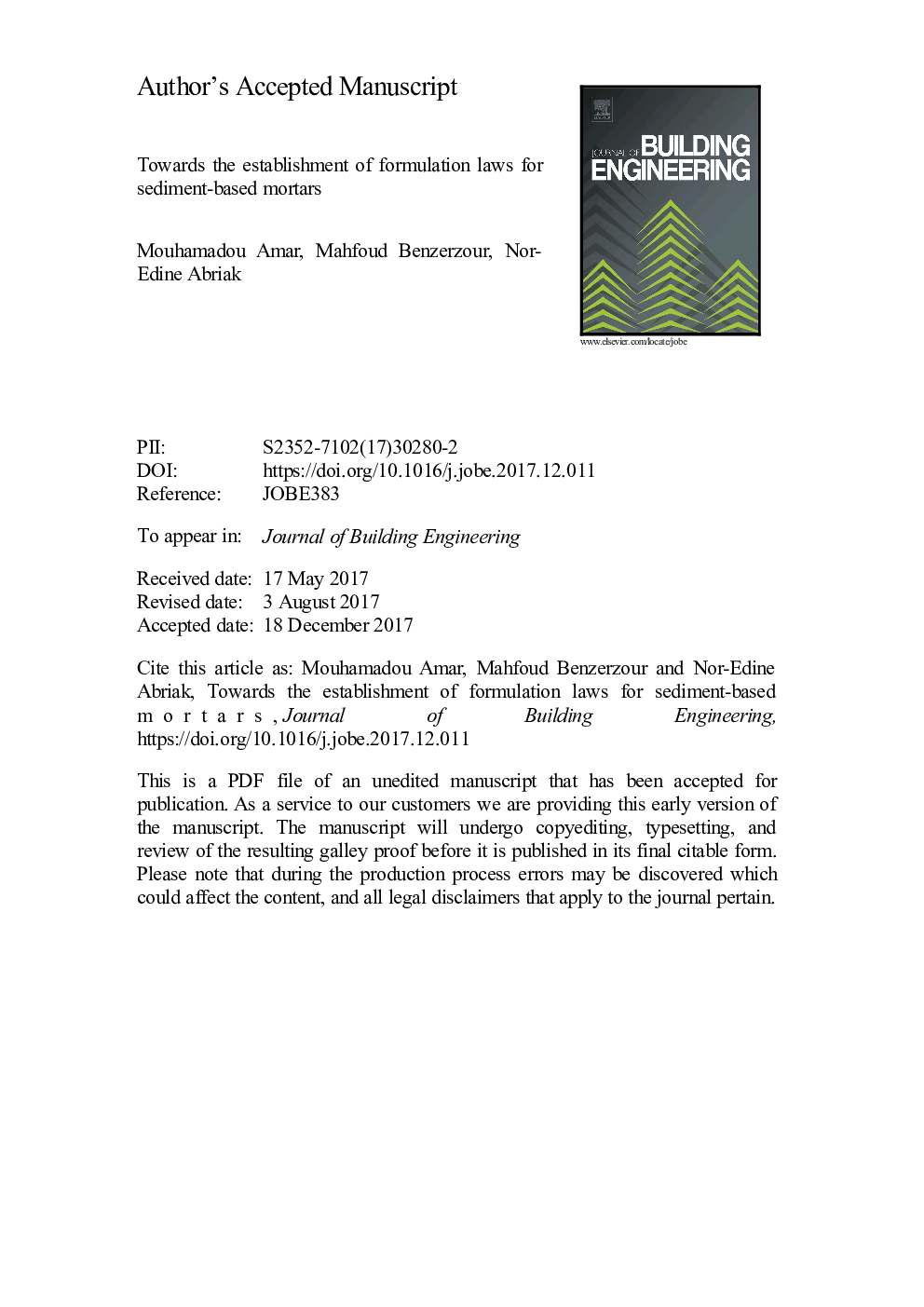| Article ID | Journal | Published Year | Pages | File Type |
|---|---|---|---|---|
| 6749973 | Journal of Building Engineering | 2018 | 24 Pages |
Abstract
The 21st century marks a remarkable stage of a widespread awareness for environmental protection and the preservation of natural resources. In this context, the beneficial use of dredged sediments as building materials really fits with this aim. There is currently no objective method for the formulation and strength prediction of sediment-based mortars. The consequence is that the results can be very variable and the test conditions are difficult to reproduce. The monitoring method in this study involves formulating mortars with water/binder (w/b) ratios defined by: w/b = 0.4; w/b = 0.5; w/b = 0.6; w/b = 0.7 and w/b = 0.8. For each given w/b ratio, mortars contain increasing amounts of sediment in partial substitution to cement (p = 0%; 5%; 8%, 10%; 15%; 20%; 25%). By investigating the compressive strength of these mortars after 7, 28 and 60 days maturation, objective and comprehensive models for the prediction of compressive strength of sediment-based mortars are proposed.
Related Topics
Physical Sciences and Engineering
Engineering
Civil and Structural Engineering
Authors
Mouhamadou Amar, Mahfoud Benzerzour, Nor-Edine Abriak,
